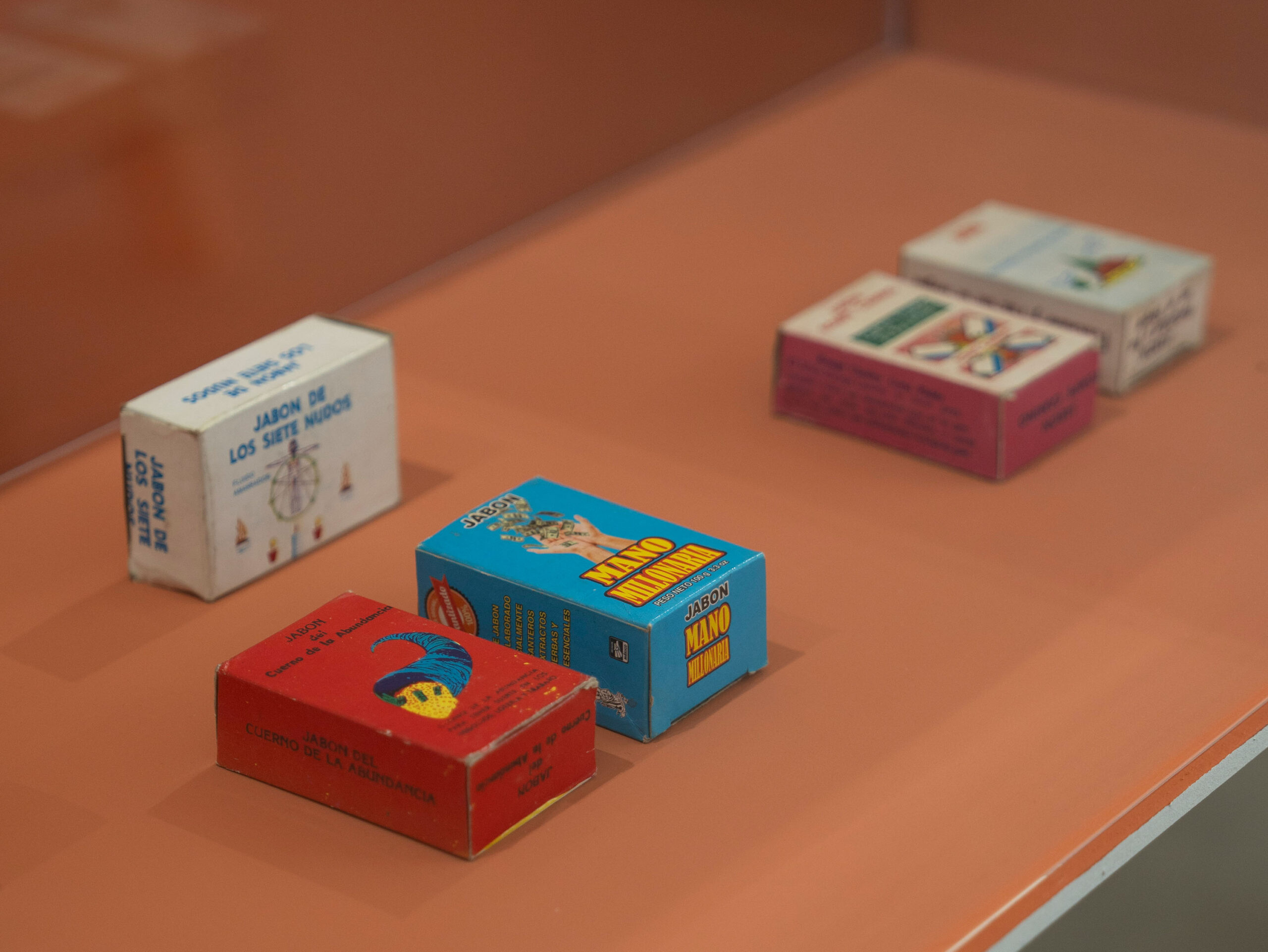
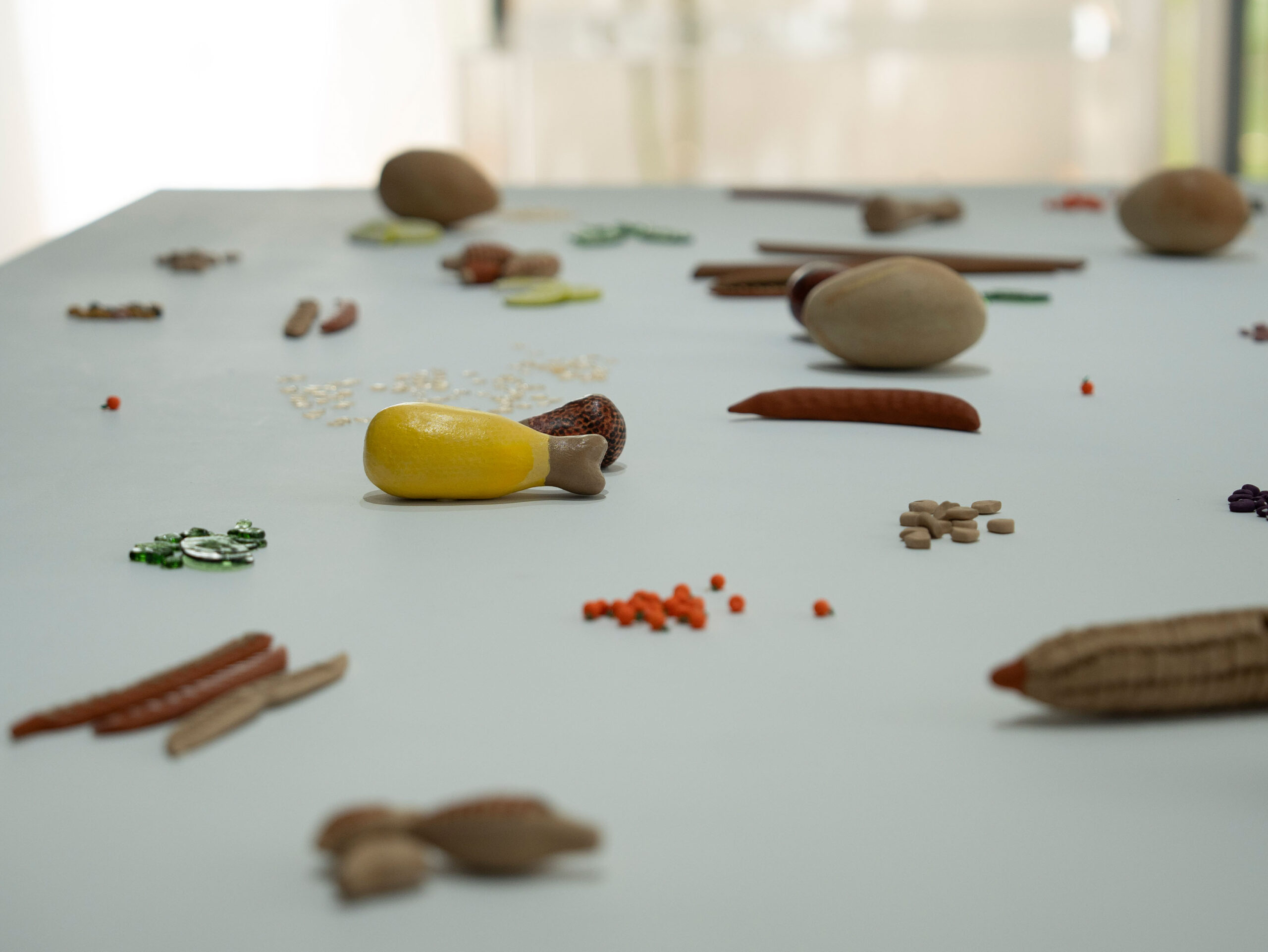
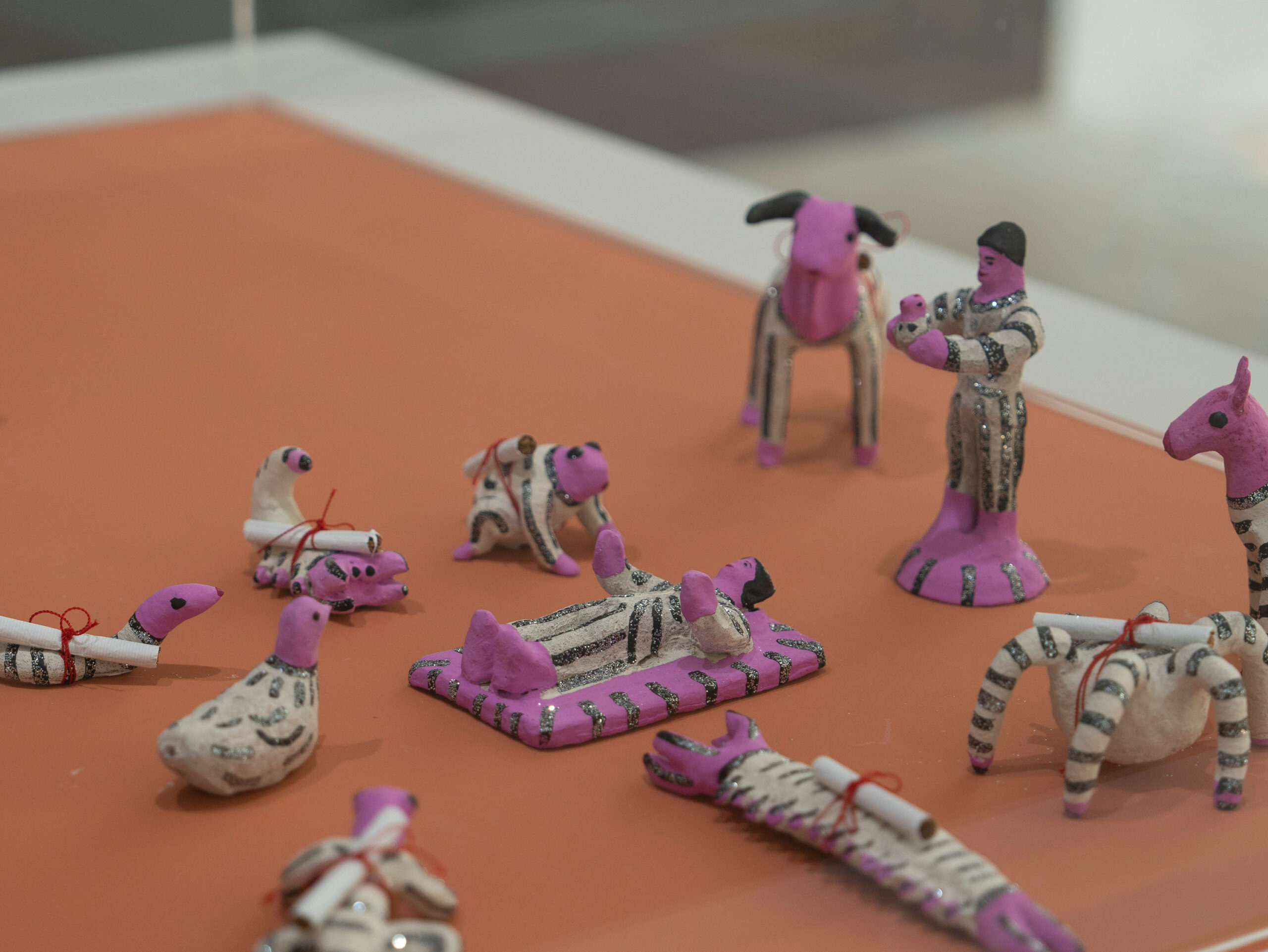


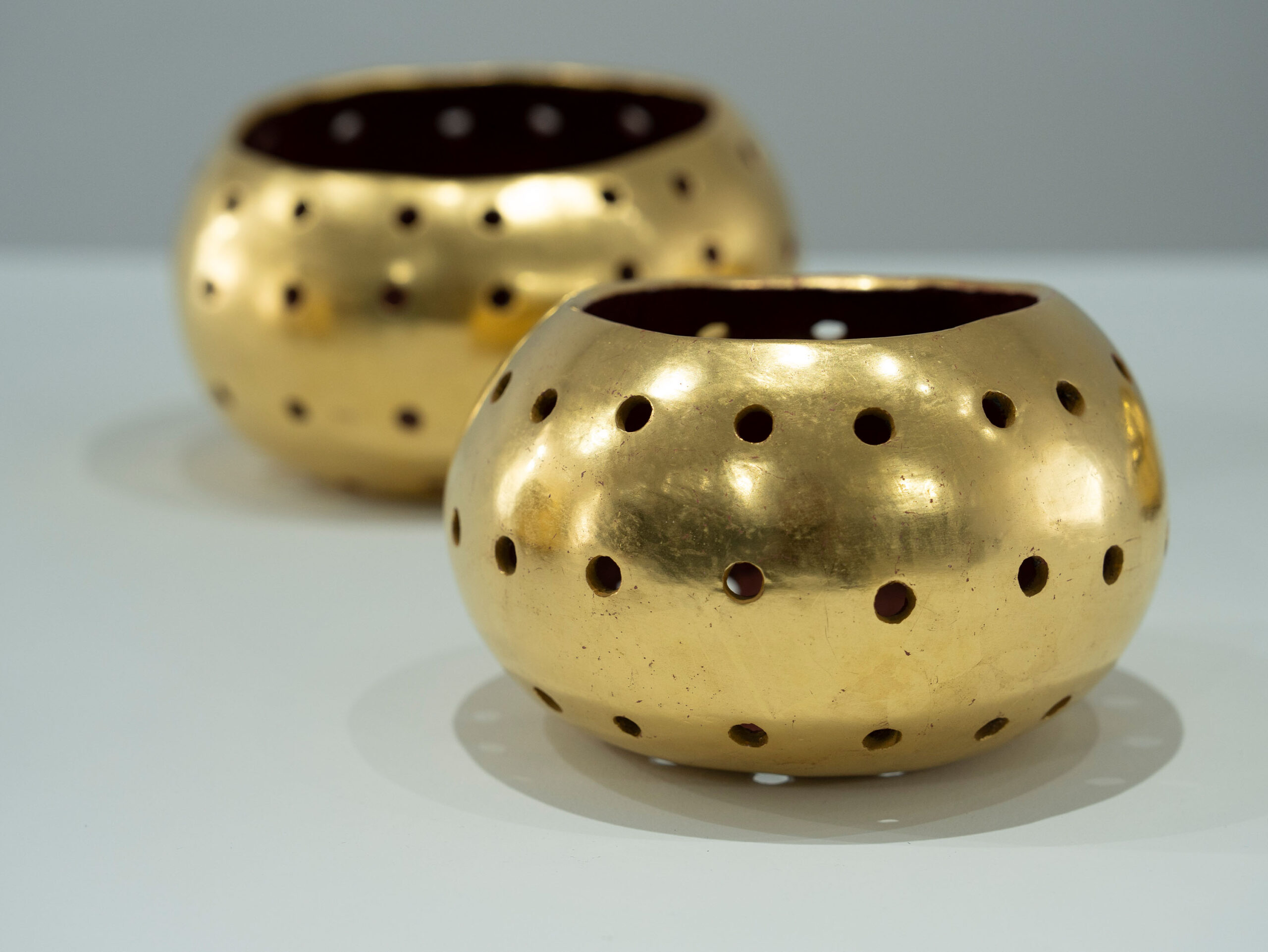
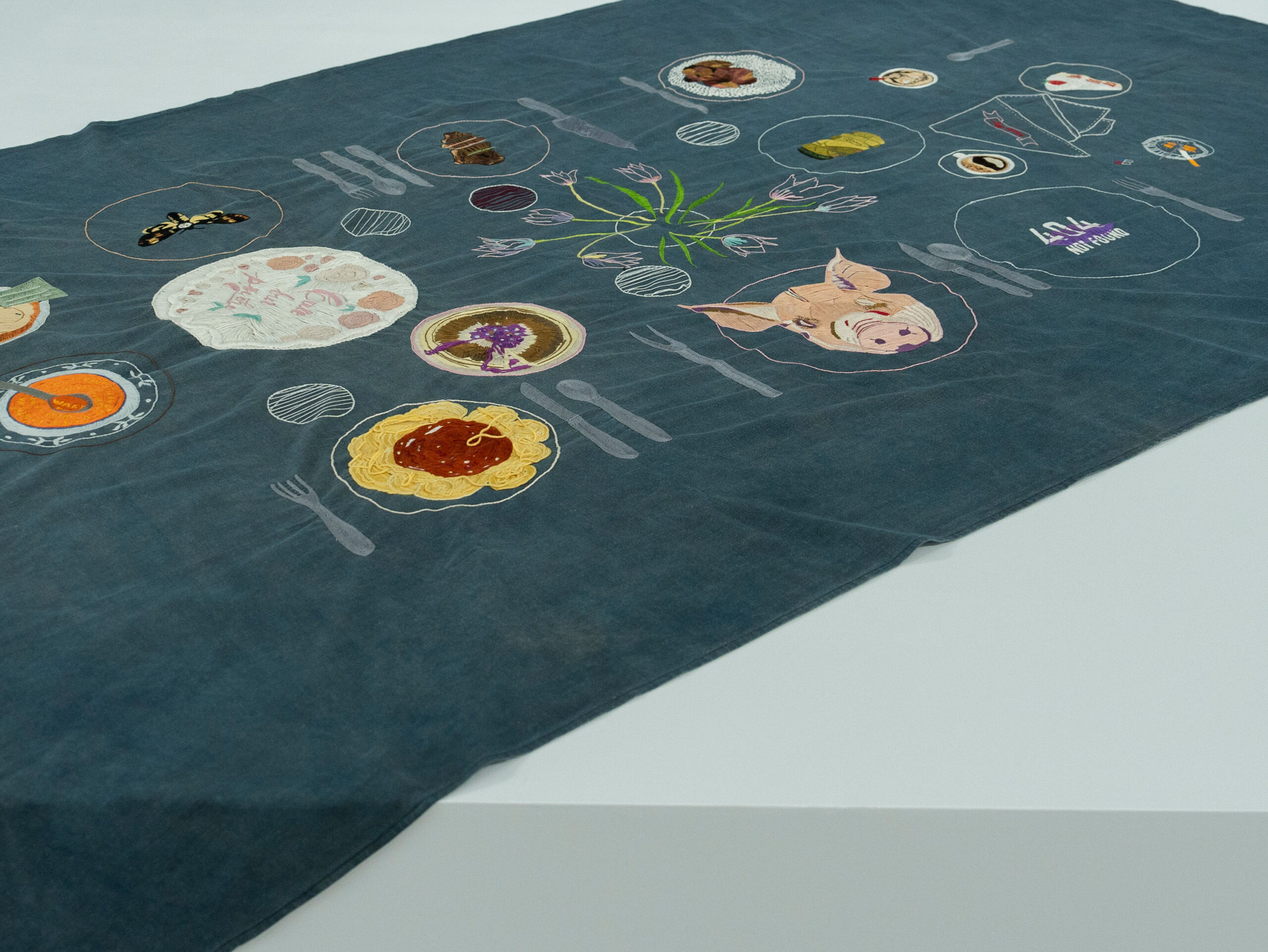
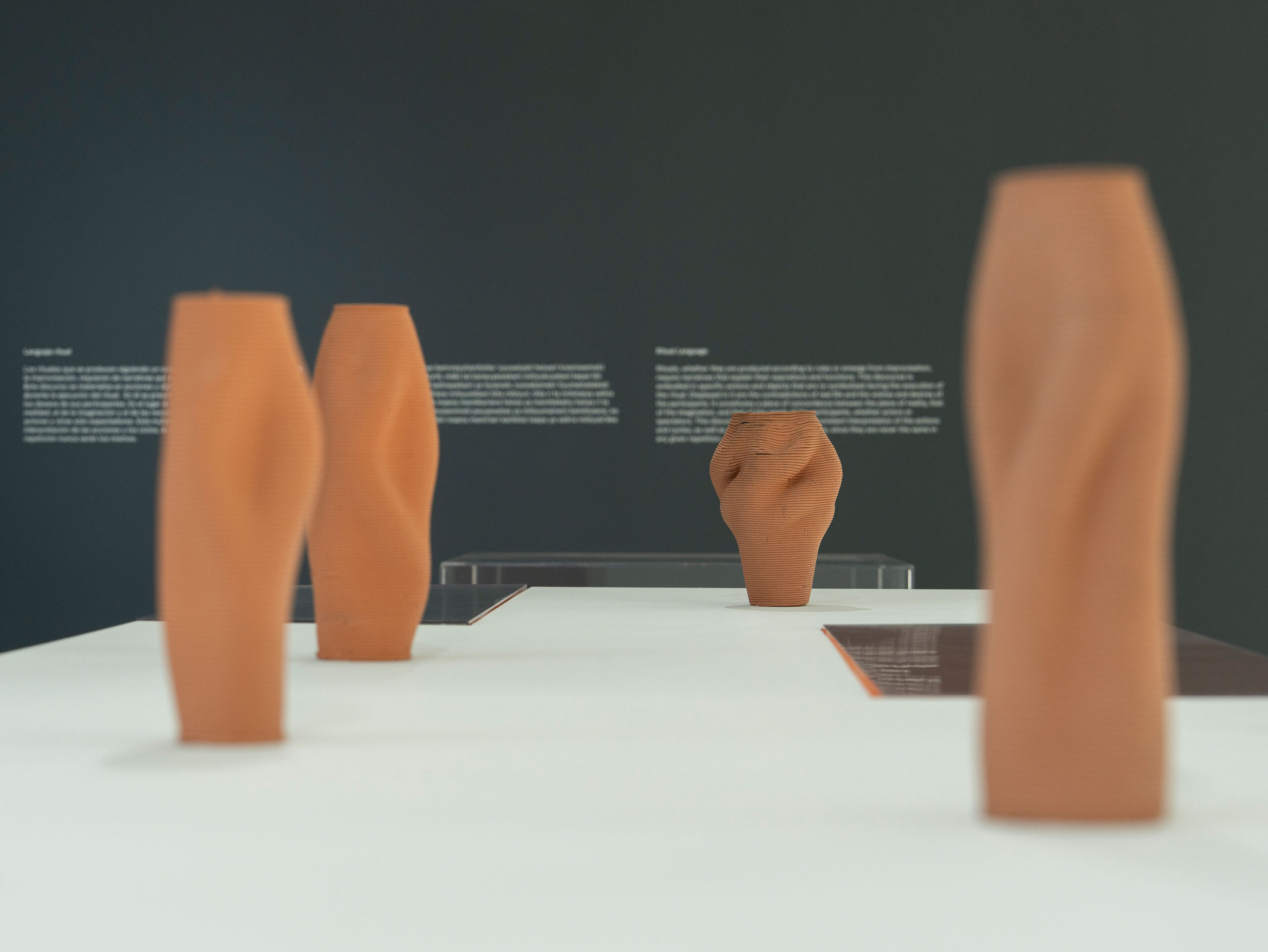

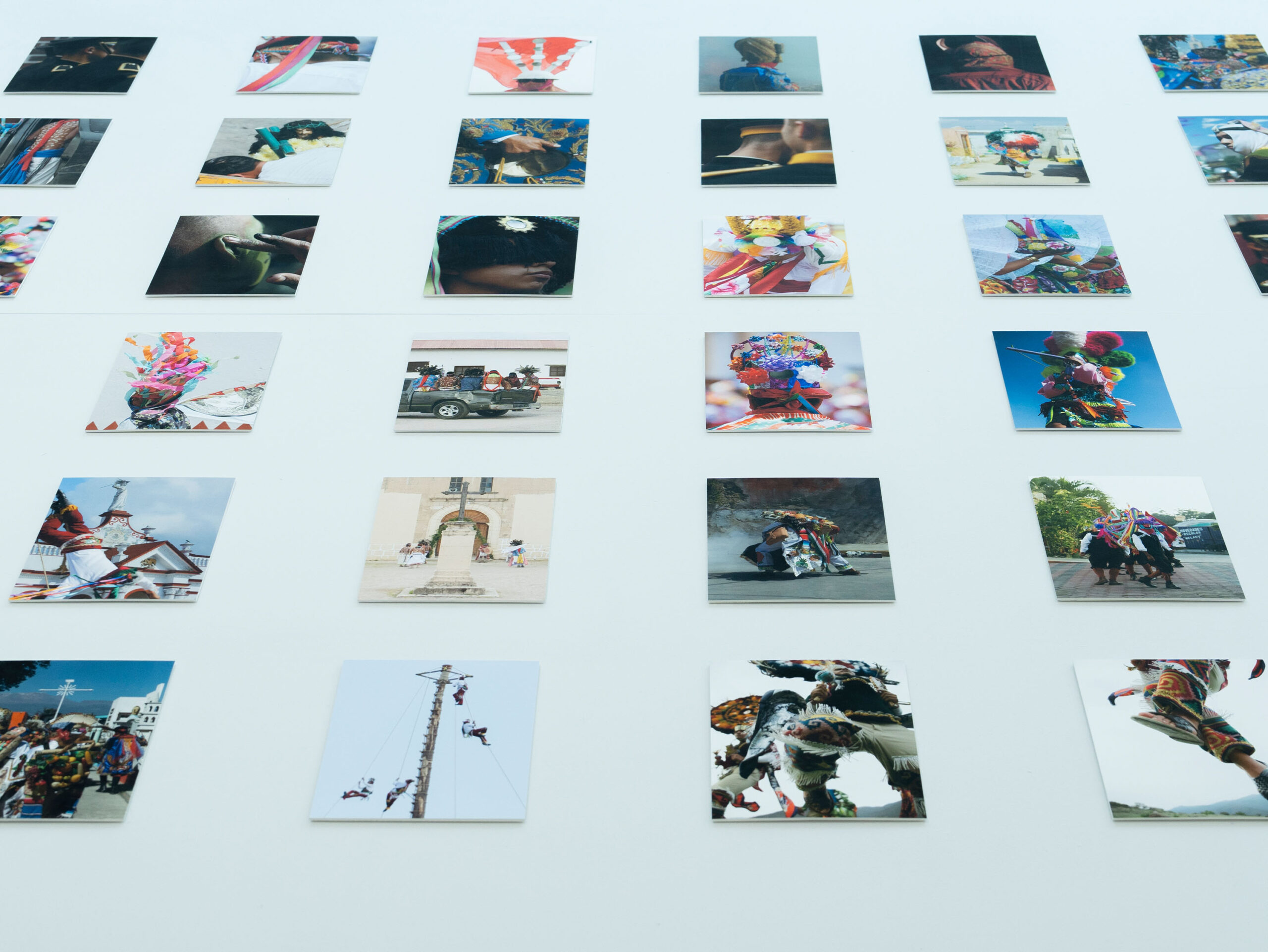
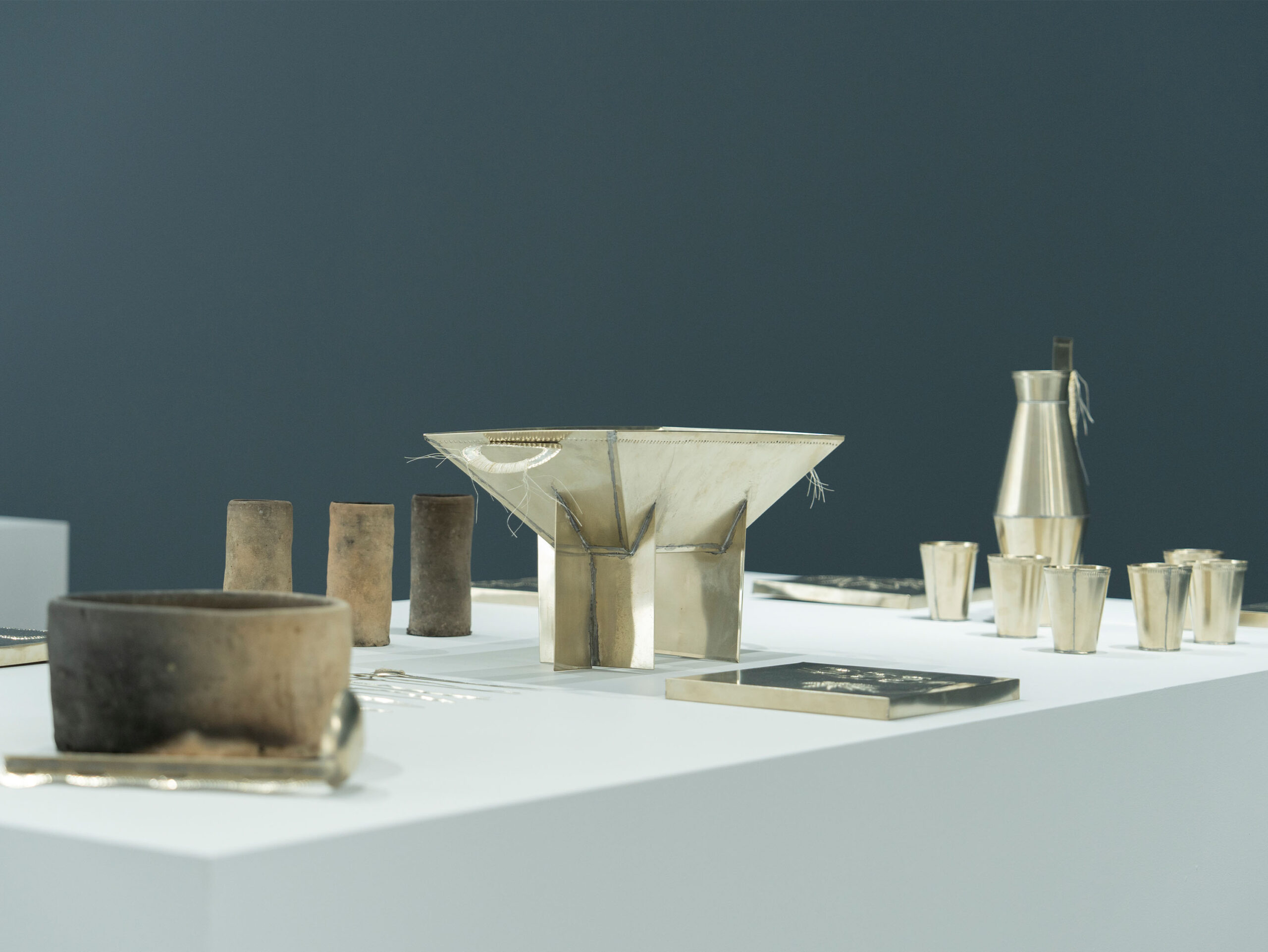
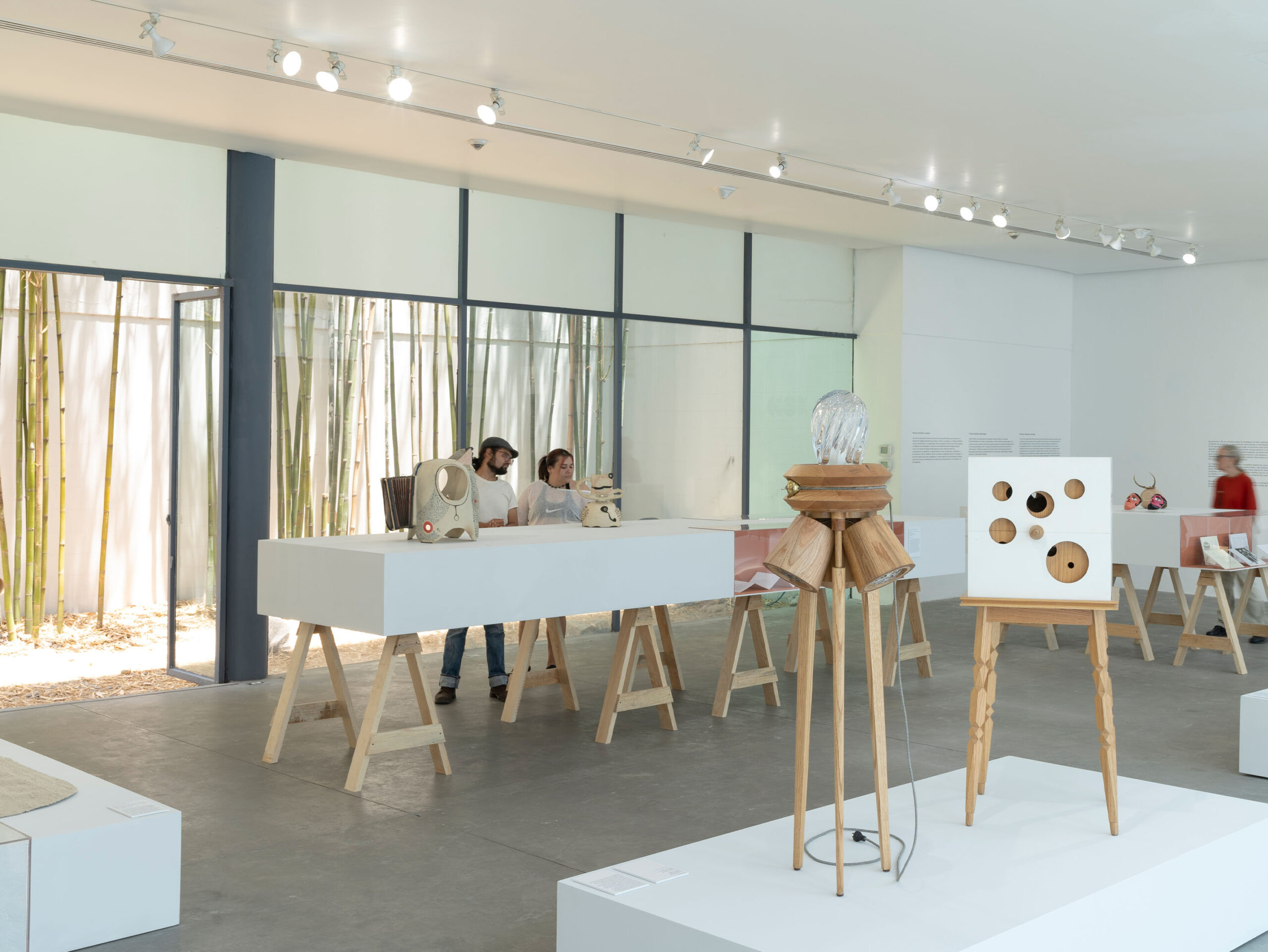

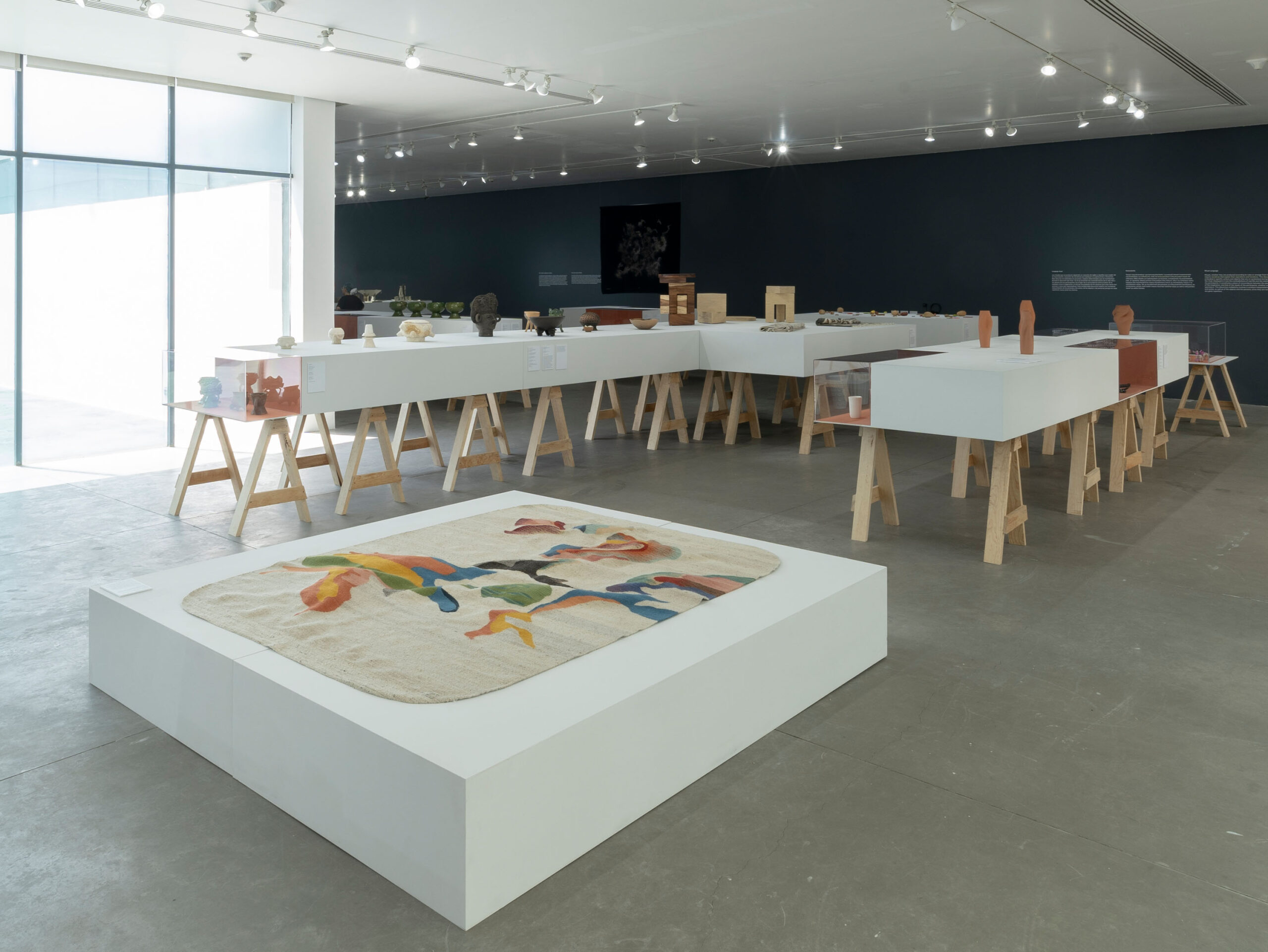
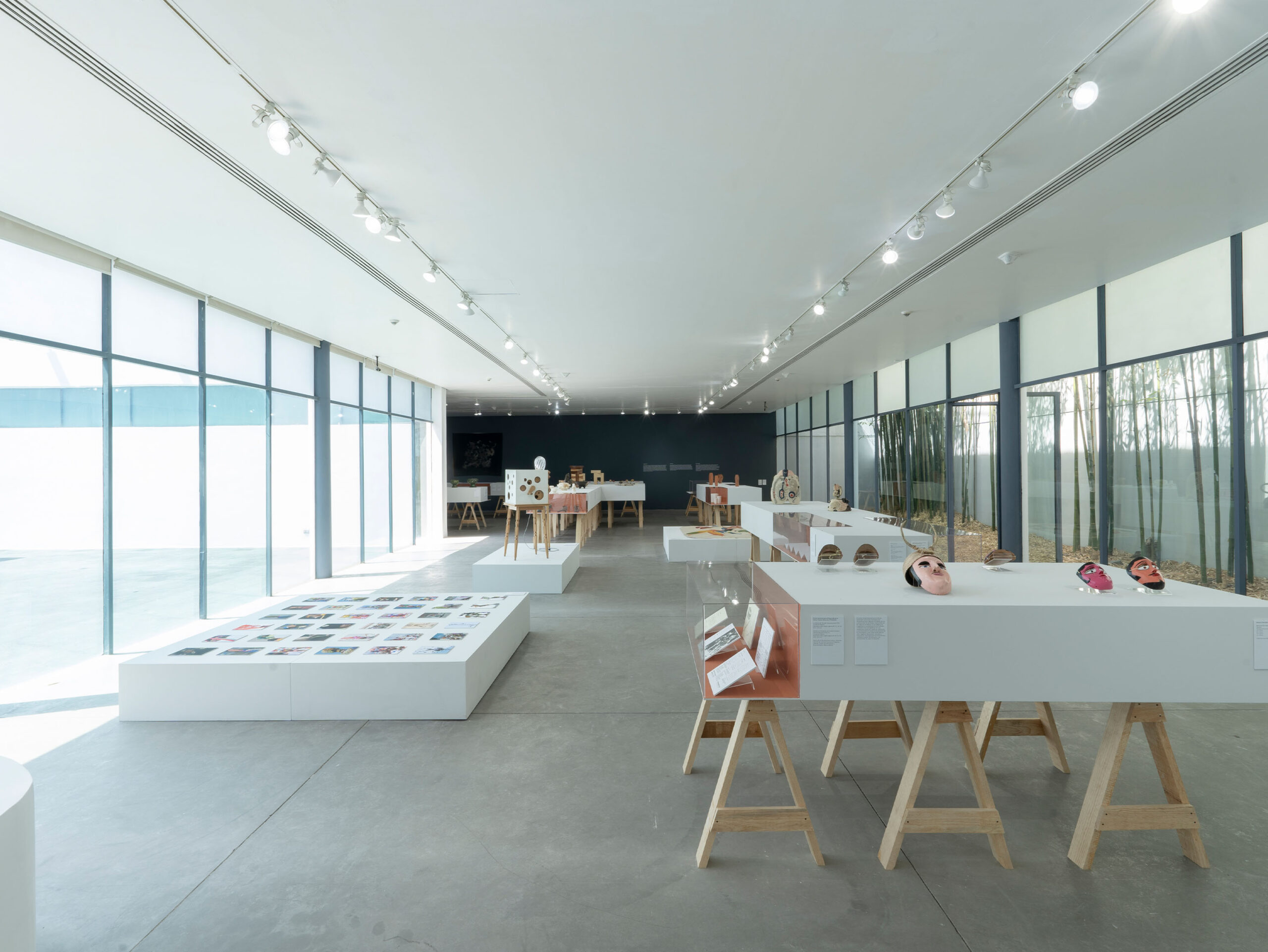
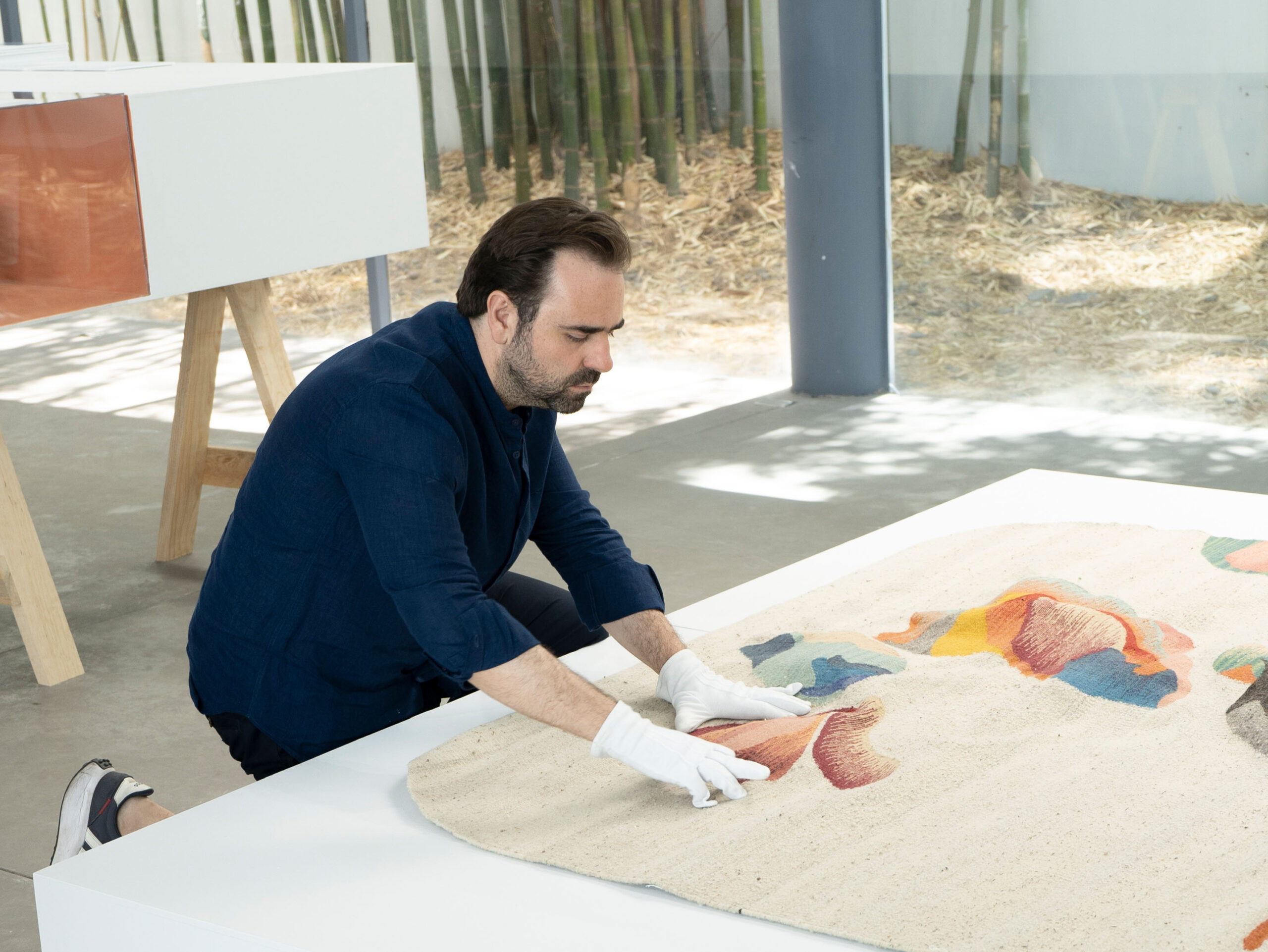
Gestures and Objects, Design and Ritualism
From June 7 to October 27, 2024
Curador: José Antonio Sada Sánchez Mejorada
Contemporary Fashion Design Program
Sala Juan Soriano
Introduction
In the nineteenth century, studies of ritualism and myth were subordinated to the notion of the sacred in communal and individual practice. It was only in the twentieth century that anthropology, sociology, and psychology would discover that ritual acts also operate alongside religious practice, thereby demonstrating that, in both secular and civil contexts, ritual constitutes a situational activity made up of intentional human actions capable of transforming persons, spaces, and the materiality of objects, as well as their uses and meanings. Thus, every ritual practice implies the movement, the dis-articulation, of each one of its parts.
The exhibition Gestures and Objects. Design and Ritualism explores the formal, symbolic, performative, regulatory, and invariant characteristics of ritual activity, as seen in pieces ranging from utensils for eating to miniature altars and musical instruments, in order to show how it is not a static process, and that its evolution involves the redesign and innovation of objects, services, and experiences that can be constantly updated, in the manner of an endlessly changeable rhizome.
The exhibition is a dialogue involving art, design, photography, and ethnography, in which we attempt to bring out the vitality of ritual and its connection with daily life through the use and movement of everyday objects.
Rhythms, Movement, and Space
One of the components of the ritual act is the performative action that consists of a set of gestural codes executed within a predefined time and space and characterized by their repetitive nature. In these rhythmical movements, objects and artifacts are manipulated by means of an energy derived from corporal effort, as in the case of traditional dances, which create relations between choreographic compositions and paraphernalia of an ornamental or symbolic kind. In everyday secular contexts, the handling and use of objects may undergo resignifications subject to the gestures and movements of the dance in areas such as health, alimentation, interpersonal relations, politics, or propaganda.
CRitual Language
Rituals, whether they are produced according to rules or emerge from improvisation, require narratives that explain their aspirations and functions. This discourse is embodied in specific actions and objects that are re-symbolized during the execution of the ritual. Displayed in it are the contradictions of real life and the wishes and desires of the participants. It constitutes a place of concordance between the plane of reality, that of the imagination, and that of the needs of the participants, whether actors or spectators. This discursive multiplicity involves a constant interpretation of the actions and cycles, as well as of the objects and the persons, since they are never the same in any given repetition.
Rituals, Change, and Transition
Ritual and its components are not immutable. On the contrary, ritual is a medium that has proved to mediate effectively between change and tradition, maintaining the meanings and symbols of the latter and above all perpetuating its role within the community and social system. Through the adaptation of material components and their relations with the context, rituals preserve and renew their practices in order to make way for new readings of one or several of their elements, which are reinterpreted and reread to generate new objects, integrated into the original ritual with the same symbolic faculties and intentional functions, or at least capable of empowering them. At the same time, new practices emerge, articulated around existing ritual objects, or new rituals are created, which draw on traditional elements, thereby seeking to respond to and address emerging contextual needs.
Micro-Rituals and Everyday Design
Micro-rituals are produced in private settings, whether individual or collective, and tend to regulate behavior and personality. They are acts of a civil, secular nature, as in the case of manners and etiquette, which govern interpersonal relations in both public and private contexts, from codes and gestures used in greeting people to table manners, or even ways of crossing oneself as a sign of religious piety. They may derive from traditional and/or religious rituals, such as the rites of passage associated with offerings, exchanges, and commemorations. But there are also micro-rituals of a profane nature, which have given rise to new practices such as those connected with physical health and wellbeing, some of which require the design of objects, services, and experiences for personal use, but which may be acknowledged and repeated on a collective level.
Design for the Ritualism of the Future
Given the signs of change observable in present-day ritualism, we may ask ourselves: What is the future of the ritual act and how will its performative aspect have an impact on relations with the context, with subjects, and with objects? How will technology and digital media modify the ways in which rituals are configured and developed? Indeed, may we not already be practicing rituals mediated by the digital world?
Trends suggest that, given the popularization and proliferation of digital spaces that allow for interaction between the dimensions of the virtual and the real, along with increased capacity to process information, new rituals will arise in response to changes in social structures and the evolution of value systems. This will generate new symbolic intentions in ritual acts and their components, resulting in the design and redesign of gestures and objects for the ritualism of the future. Technological tools will be able to expand the functional, formal, and symbolic properties of objects and of the experiences of those participating in ritual acts.
In a way, the past has already borne witness to the necessary transformations of an inexorable future. It is simply a matter of noticing when the clay used in ancient rituals was replaced by plastic, or fire and candles by an electrical spark. The materiality of objects bears witness to technological time and to the rituals of time.
Info
Date:
1 October, 2024
Category:
